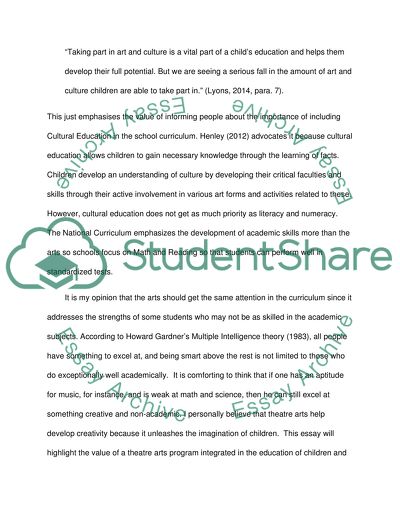Cite this document
(“What should young people be taught about theatre and what principles Assignment - 1”, n.d.)
What should young people be taught about theatre and what principles Assignment - 1. Retrieved from https://studentshare.org/education/1660870-what-should-young-people-be-taught-about-theatre-and-what-principles-should-guide-the-padagogy
What should young people be taught about theatre and what principles Assignment - 1. Retrieved from https://studentshare.org/education/1660870-what-should-young-people-be-taught-about-theatre-and-what-principles-should-guide-the-padagogy
(What Should Young People Be Taught about Theatre and What Principles Assignment - 1)
What Should Young People Be Taught about Theatre and What Principles Assignment - 1. https://studentshare.org/education/1660870-what-should-young-people-be-taught-about-theatre-and-what-principles-should-guide-the-padagogy.
What Should Young People Be Taught about Theatre and What Principles Assignment - 1. https://studentshare.org/education/1660870-what-should-young-people-be-taught-about-theatre-and-what-principles-should-guide-the-padagogy.
“What Should Young People Be Taught about Theatre and What Principles Assignment - 1”, n.d. https://studentshare.org/education/1660870-what-should-young-people-be-taught-about-theatre-and-what-principles-should-guide-the-padagogy.


